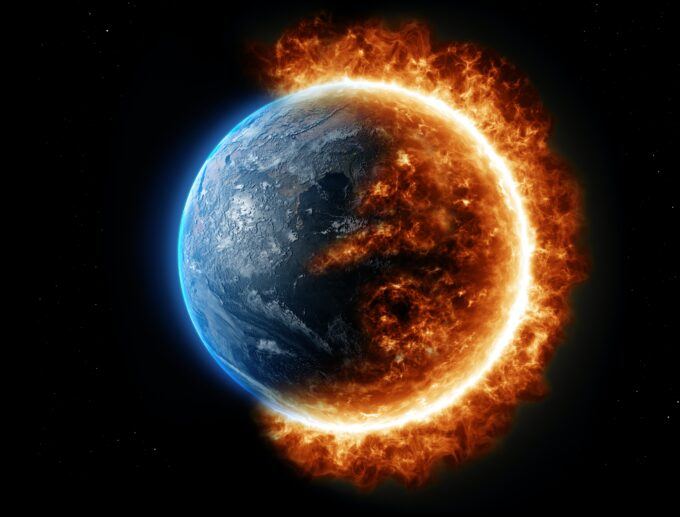CANADA
NOT JUST ATM'S WERE DOWN SO WAS 911
Far-reaching implications of Rogers outage shows need for competition: Expert
Fri, July 8, 2022
TORONTO — A widespread Rogers Communications Inc. outage that caused trouble for 911 services, retailers and transit operators Friday had many warning the incident is a sign that monopolistic telecommunications companies need more competition.
"The outage is illuminating the general lack of competition in telecommunications in Canada," said Vass Bednar, executive director of McMaster University's master of public policy program.
The country's telecom sector is dominated by three large carriers — Rogers, BCE Inc. and Telus Corp. — and their hold on the industry has long been a concern of academics, who have called for regulators to increase competition for mobile and internet services in Canada.
The Competition Bureau is currently fighting Rogers' plans to purchase Shaw Communications Inc. for $26 billion despite the planned sale of its Freedom Mobile business to Quebecor Inc. because the regulator feels the deal would only bolster Rogers' monopoly and not create a viable fourth carrier.
When the outage began Friday, Rogers, Shaw and the Competition Bureau had just wrapped a two-day mediation period that ended with no resolution.
The company offered no explanation for the outage or its expected duration, number of customers affected and location, but promised technical teams are "working hard to restore services as quickly as possible."
When everything from 911 services to GO Transit is impacted by a Rogers outage, the reach of telecommunications companies is very obvious, Bednar said.
"But unless we're going to see people switching their providers today or new publicly run options suddenly springing up, there's not much more that we can do right now other than perhaps factor in people's anger and frustration, as the pending Rogers-Shaw deal is considered."
She added that people should be compensated for the disruption.
"It's a huge expense to Rogers, but even a modest decrease on people's bills would acknowledge some kind of deficit."
Beanfield, an independent fibre network operator, called the outage "every telecom provider’s nightmare," but said it was also an example of why it has long been concerned with the lack of rivals for Rogers, Telus and BCE.
"A lack of competition and choice can lead to a building with the population of a small town going completely dark- cut off from all communications," the company said on Twitter.
"If you can't even get help from a neighbour, where do you go? How do you call 911?"
The business implications are likewise tremendous, the company added.
"The consequences of such an outage for the financial sector, the lack of functioning ATMs, of working bank branches, can be catastrophic," it said.
"Not to mention the independent businesses across the country with no way of processing payment."
This report by The Canadian Press was first published July 8, 2022.
Companies in this story: (TSX:RCI, TSX:BCE, TSX:T)
Tara Deschamps, The Canadian Press
Massive Rogers outage snarling telecom, banking and government services continues

A massive outage at Rogers has brought down internet and cellular service across Canada, and has also interrupted government services and payment systems for businesses and individuals.
The outage began some time early Friday morning, and as of 5 p.m. ET had not been fixed.
The company does not have an estimate when it will be fixed, said Kye Prigg, Rogers' senior vice-president of access networks and operations, on CBC's Power & Politics.
"I wouldn't like to say whether it's going to be fully online today or not, but we are working very, very hard on making sure that we get everything running as soon as possible," he told host Catherine Cullen.
"[But] we're getting very close to understanding the root cause of the of the failure. And we're taking actions along with our network vendors to recover the situation."
"We don't understand how the different levels of redundancy that we build across the network coast to coast have not worked," he said.
WATCH | Rogers 'close' to finding source of problem:
The company has approximately nine million wireless customers and just shy of three million on the cable and internet side of the business.
Responding to questions about compensation, Rogers said Friday afternoon that it would be "proactively crediting all customers" — but did not provide further details.
While the company isn't divulging a root cause, cybersecurity firm Cloudflare says it is unlikely to have been caused by a cyberattack. "Based on what we're seeing and similar incidents in the past, we believe this is likely to be an internal error," the company said in a blog post.
Canada's electronic spy agency, the Communications Security Establishment, agrees with that assessment, telling CBC News in a statement Friday there is "no indication" the outage is due to a cyberattack.
Whatever the reason, the impact has been dramatic. Internet monitoring watchdog group Netblocks.org reports that total internet traffic in Canada was at 75 per cent of its normal level on Friday morning.
Rogers-owned flanker brands like Fido and Chatr are also offline, but even services not directly controlled by Rogers, such as emergency services, travel and financial networks, are having problems.
WATCH | Not a cyberattack, government official says:
Debit payment services have also been interrupted.
"A nationwide telecommunications outage with a network provider … is impacting the availability of some Interac services," a spokesperson for Interac confirmed to CBC News.
Change in traffic on the Roger's network since yesterday
"Debit is currently unavailable online and at checkout. Interac e-transfer is also widely unavailable, impacting the ability to send and receive payments."
Bell confirmed that it is having no issues on its network, although it says customers are having difficulties connecting to anything on a Rogers network.
"The Bell network is operational and calls and texts between Bell customers or to other providers are not impacted," the company said on Twitter.
Telus networks were also working normally.
CBC's radio station in Kitchener, Ont., has been taken offline and off the air as a result of the outage.
The Toronto Police Service tweeted that Rogers customers in that city were having trouble connecting to 911, but stressed that the 911 service itself was working properly, as long as people weren't calling from a Rogers-affiliated device.
"We are working to resolve these issues," the force said.
Other emergency services reported a similar status.
"Although Rogers is experiencing a nationwide outage, our tests have shown 911 is still working," a spokesperson for the Fredericton Police Service told CBC News.
Officials in Winnipeg and Vancouver also stressed that emergency services are operational, but people on the Rogers network can't seem to access them.
Under Canadian Radio-television and Telecommunications Commission (CRTC) rules in place since 2017, telecom networks are supposed to ensure that cellphones are able to contact 911 even if they do not have service.
Canada's telecom regulator did not immediately reply to a request from CBC News as to whether the 911 problems seen Friday are in breach of those rules. In a tweet, the CRTC said it also doesn't have reliable phone service due to the Rogers outage.
WATCH | Here's what regular Canadians told us:
Outage 'incomprehensible'
They aren't the only ones. Ordinary Canadians told CBC News on Friday that the outage is unacceptable.
"This can't happen again without changes being made," said Torontonian Andrew Revai. "People can tweet all the memes they want about losing connectivity but how will Rogers keep this from happening again?"
Ottawa resident Robert Hubscher said "it's incomprehensible" that a company as big as Rogers could have an outage this widespread for this long.
He uses Rogers for his cellphone and home internet, and said he's glad he has some services with other companies to maintain connections right now.
"It's a little scary that the regulatory bodies are not looking at this more seriously," Hubscher said.
Government services including already bottlenecked passport offices, Service Canada, Public Services and Procurement Canada and the Canada Revenue Agency are also affected.
WATCH | Regulations need overhaul, expert says:
The Canada Border Services Agency says the ArriveCan app is disabled because of the outage, so anyone arriving in Canada must have a paper copy of their vaccination status.
Telecom analyst Vince Valentini with TD Bank, who covers Rogers, says it's not good for the company's reputation to have an outage of this scale, especially since it seems to be across all of its services, from internet to wireless.
"The longer this situation lasts, we believe there could be minor risks to customer churn," he said. "And also there could be credibility issues for Rogers in the future as it attempts to ramp up sales."
It's the second time in as many years that Rogers has been rocked by a major outage, as the company's wireless and cable networks went down in a similar fashion in April 2021. At the time, Rogers blamed an issue with a software update at one of its telecom equipment suppliers.
That time, the company offered customers rebates for their services, which ended up working out to a few dollars per customer. If the same metric is applied this time, Valentini says the company could be on the hook for about $28 million in rebates.
Technology analyst Ritesh Kotak says he suspects the cause of the outage is "an update gone wrong" in one of Rogers' internal systems.
Regardless of why, Kotak says it underscores how vulnerable Canada's economy is to outages like this, and says he makes sure all his telecom services come from different providers for this exact reason.
"It shows just how reliant we are on this technology," he said in an interview. "From some government services … to working from home, all that has literally been shut down."
Vass Bednar, executive director of of McMaster University's Master of Public Policy in digital society program, says the outage underlines a long-simmering problem with Canada's telecom network, which is that both the infrastructure and the services themselves are owned by private companies.
That's not the case everywhere in the world, where private sector players control one or the other, and often compete with a public option.
"The internet and cellular services ... seem like a public good," she told CBC News. "They seem like critical digital infrastructure that we all need to use, and yet they are privately owned and operated."
"Maybe it's time for Canadians to seriously rethink that."








